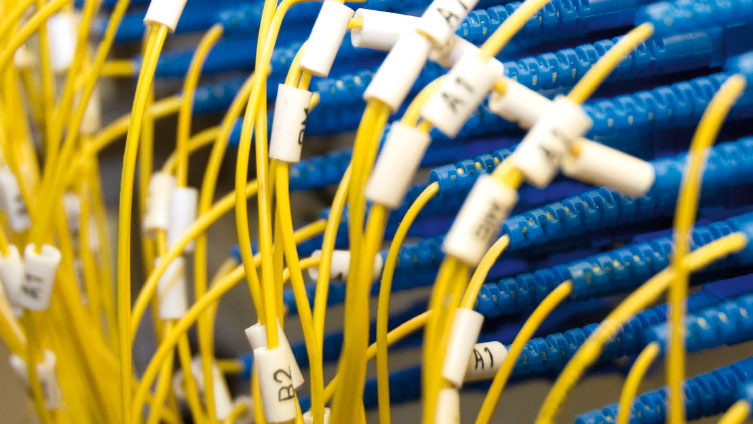Making your business wire-free
Why Wifi and Bluetooth have the advantage over wired networks

Today's wireless technology gives businesses the opportunity to work in offices that are relatively free from the clutter of cables. Computers, keyboards, mice, printers and headsets can all be wire free nowadays.
The aim of wireless technology is to remove the restrictions of being attached to computers and peripherals with messy wires and cables, enabling workers to roam more freely. Wireless radio networks can give Internet access to people visiting the office, as well as temporary staff, and let people hot-desk, in other words work from anywhere in the office, wherever they can access the network.
Freedom to work wherever you need
This can also mean that people can carry on working whilst moving around the office, which means they could go into a meeting, move to a comfortable-seating area, or collaborate at somebody else's desk, with the information they need staying at their fingertips.
More and more businesses are choosing wireless networking, particularly since it has fallen in price and become easier to set up and configure. The benefits of wireless working include having a more attractive, and arguably safer office environment with fewer cables around, with fewer tripping hazards.
Wireless networks can also match wired networks for security, because they can be set to scramble the data that runs over them, using encryption. They also offer more flexibility in terms of where IT equipment is located.
A simple wireless network will consist of; a router that is attached to the external phone line or to a fibre broadband connection, and creates a shared Internet connection, and a series of wireless access points that interconnect together, through which the computers, servers and peripherals can connect with each other and to the internet.
The benefits of wireless v's wired
Other benefits of wireless networking include lower cost savings on network equipment, because wireless networks can be easier and cheaper to install. This is especially the case in listed buildings, or where it would be difficult or expensive to install standard Ethernet networking cables.
Are you a pro? Subscribe to our newsletter
Sign up to the TechRadar Pro newsletter to get all the top news, opinion, features and guidance your business needs to succeed!
Wireless networking can also enable businesses to extend their network into areas where cables might not be practical, such as into nearby store rooms or warehouses, or across public areas adjacent to the business premises.
By equipping staff with wireless notebooks or tablets, you can give them the freedom to work from cafes, stations, hotels and airports, or other places where there are wireless hotspots. As well as providing a change of scene, it enables them to be more productive whilst out and about, between meetings, as well as outside office hours.
The drawbacks of wired and wireless
However, traditional wired networking can still have the edge over wireless equipment in being more reliable, lower cost and offering faster connection speeds. Wireless signals on the other hand can vary depending on the layout of an office, the thickness of the walls and sometimes even the weather. Consequently, it is still better to have a cabled network running alongside the wireless one, to maintain 'business continuity' – so the network continues to function if the wireless one temporarily fails.
In addition, you may experience interference if other people in the same building also use wireless technology, or where there are other radio signals flying about.
Bluetooth personal area networks
An alternative, or complementary technology to the wireless network, is Bluetooth, which allows certain devices such as phones and mobiles, headsets, mice, PCs, printers and keyboards, to connect wirelessly within a range of 10 metres.
Bluetooth can offer a cost-efficient and convenient way to create a small 'personal area network' of computing devices, giving the individual worker a great deal of flexibility. Amongst the strengths of Bluetooth are its robustness, low power, and low cost, and the fact that it has become a universal standard for exchanging data amongst a range of fixed and mobile devices.
Bluetooth wireless technology also has the ability to simultaneously handle both data and voice transmissions, which makes it ideal for both telephony and computing.
One drawback is that whilst Bluetooth networks are relatively secure, they can have slow data rates. Also, some Bluetooth networks can clash with other wireless networking technologies that use the same radio bands. Thirdly, Bluetooth is a short-range wireless system, so it's not suitable for wireless connections over distances greater than 10 metres.
In summary, wireless networking can create a less cluttered working environment, and offer greater flexibility for workers and a cost-efficient way to extend the network, which is why so many businesses are opting to go wire-free.